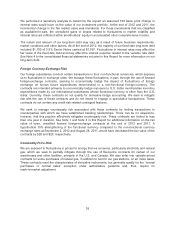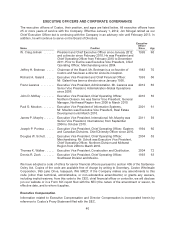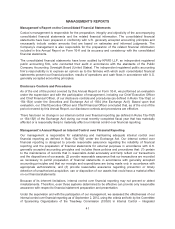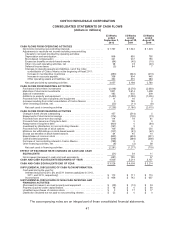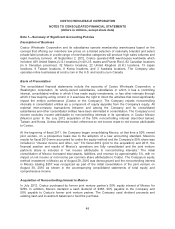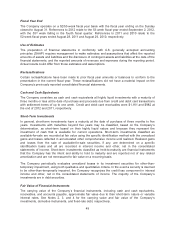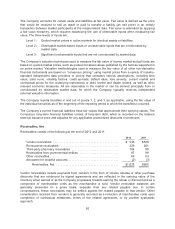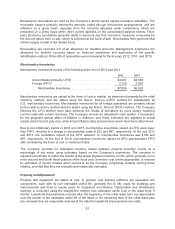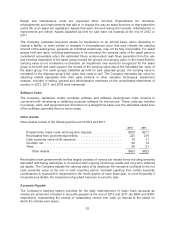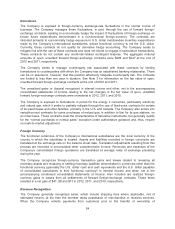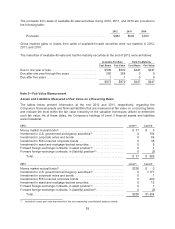Costco 2012 Annual Report Download - page 51
Download and view the complete annual report
Please find page 51 of the 2012 Costco annual report below. You can navigate through the pages in the report by either clicking on the pages listed below, or by using the keyword search tool below to find specific information within the annual report.Fiscal Year End
The Company operates on a 52/53-week fiscal year basis with the fiscal year ending on the Sunday
closest to August 31. References to 2012 relate to the 53-week fiscal year ended September 2, 2012,
with the 53rd week falling in the fourth fiscal quarter. References to 2011 and 2010 relate to the
52-week fiscal years ended August 28, 2011 and August 29, 2010, respectively.
Use of Estimates
The preparation of financial statements in conformity with U.S. generally accepted accounting
principles (GAAP) requires management to make estimates and assumptions that affect the reported
amounts of assets and liabilities and the disclosure of contingent assets and liabilities at the date of the
financial statements, and the reported amounts of revenues and expenses during the reporting period.
Actual results could differ from those estimates and assumptions.
Reclassifications
Certain reclassifications have been made to prior fiscal year amounts or balances to conform to the
presentation in the current fiscal year. These reclassifications did not have a material impact on the
Company’s previously reported consolidated financial statements.
Cash and Cash Equivalents
The Company considers as cash and cash equivalents all highly liquid investments with a maturity of
three months or less at the date of purchase and proceeds due from credit and debit card transactions
with settlement terms of up to one week. Credit and debit card receivables were $1,161 and $982 at
the end of 2012 and 2011, respectively.
Short-Term Investments
In general, short-term investments have a maturity at the date of purchase of three months to five
years. Investments with maturities beyond five years may be classified, based on the Company’s
determination, as short-term based on their highly liquid nature and because they represent the
investment of cash that is available for current operations. Short-term investments classified as
available-for-sale are recorded at fair value using the specific identification method with the unrealized
gains and losses reflected in accumulated other comprehensive income until realized. Realized gains
and losses from the sale of available-for-sale securities, if any, are determined on a specific
identification basis and all are recorded in interest income and other, net in the consolidated
statements of income. Short-term investments classified as held-to-maturity are financial instruments
that the Company has the intent and ability to hold to maturity and are reported net of any related
amortization and are not remeasured to fair value on a recurring basis.
The Company periodically evaluates unrealized losses in its investment securities for other-than-
temporary impairment, using both qualitative and quantitative criteria. In the event a security is deemed
to be other-than-temporarily impaired, the Company recognizes the credit loss component in interest
income and other, net in the consolidated statements of income. The majority of the Company’s
investments are in debt securities.
Fair Value of Financial Instruments
The carrying value of the Company’s financial instruments, including cash and cash equivalents,
receivables, and accounts payable, approximate fair value due to their short-term nature or variable
interest rates. See Notes 2, 3, and 4 for the carrying value and fair value of the Company’s
investments, derivative instruments, and fixed-rate debt, respectively.
49


